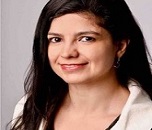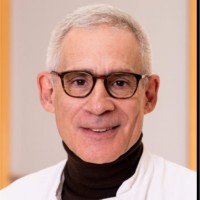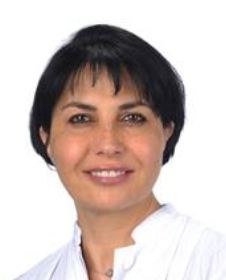Sessions/Tracks
-
Spinal Tumors
-
Vertebral fracture
-
Degenerative disc disease
-
Lordosis
-
Kyphosis
-
Spinal Infections
-
Hematoma
-
Scoliosis
-
Facet arthritis
-
Scoliosis and Spinal Deformities
-
Spinal Osteoarthritis
-
Abscess
-
Herniated discs
-
Sciatica
-
Spinal Stenosis
Track 1: Spinal Tumors
Spine tumors are rare neoplasms that can lead to significant patient morbidity and mortality. Intramedullary spinal cord tumors are the rarest of these neoplasms and can potentially lead to serve neurologic. Spine tumors comprise a small percentage of reasons for back pain and other symptoms originating in the spine. As primary tumors of spine are rare and mostly asymptomatic. Surgery is the best treatment option for the pain and neurological symptoms caused by spinal instability. Total spondylectomy or vertebrectomy, which is the wide resection procedure of spine tumors, can be performed in 1 or 2 stage operation. Spinal column represents the major portion of axial skeleton that supports vital organs. metastatic tumors are most frequent tumors that involve the spine.
Related conferences: Spine Conferences| Spine Congress| Global Spine Congress| Spine and Spine Disorders summit| World Congress on Spine and Spine Disorders| Neurosurgical Meetings| Neurosurgical Conferences| International Conference on Spine and Musculoskeletal medicine| Spine Surgery Conferences.
Track 2: Vertebral fracture
Vertebral fracture is usually the first osteoporotic fracture. There are two main reasons for this under diagnosis. Firstly, the typically clinical symptoms of back pain and restricted movement are usually attributed to Spondyolsis rather than vertebral fracture, so that most patients with vertebral fracture do not seek medical attention. Increasing age, previous non vertebral fracture, low BMD, low body mass index, current smoking, low milk consumption during pregnancy, low physical activity, having a fall, and regular use of aluminium-containing antacids all increase the childhood of a first vertebral fracture.
Related conferences: Spine Conferences| Spine Congress| Global Spine Congress| Spine and Spine Disorders summit| World Congress on Spine and Spine Disorders| Neurosurgical Meetings| Neurosurgical Conferences| International Conference on Spine and Musculoskeletal medicine| Spine Surgery Conferences.
Track 3: Degenerative disc disease
Lumbar disc degeneration is the most common cause of low back pain and it is a target of diagnostic and surgical intervention. Pathology of intervertebral disc degeneration has been approached from a variety of ways, there is no consensus as to what disc degeneration actually is or how it can be distinguished from the physiological process of growth, aging, Healing and adaptive remodeling. Intervertebral disc consists of three components: an inner gelatinous nucleus pulposus, outer annulus fibrosus and cartilage end plates located superiorly and inferiorly. The intervertebral disc is one of the largest avascular tissues derive their nutrition from vessels in the subchondral bone adjacent to the hyaline cartilage of the end adjacent to the hyaline cartilage of the end plate.
Related conferences: Spine Conferences| Spine Congress| Global Spine Congress| Spine and Spine Disorders summit| World Congress on Spine and Spine Disorders| Neurosurgical Meetings| Neurosurgical Conferences| International Conference on Spine and Musculoskeletal medicine| Spine Surgery Conferences.
Track 4: Lordosis
Postural deviations can predispone an individual to increased injury risk. Specifically, lumbar deviations are related to increased low back pain and injury. Dancers and gymnasts are anecdotally are anecdotally suggested to have exaggerated lumbar lordsis and subsequently may be at increased risk of lumbar pathologies. Lordosis is the natural curve of the lower back(lumbar) area of the spine. With an extreme curve, the lower spine will have a deep curve, causing the abdomen (stomach area) to stick out and causing the pelvis (hip areas) to curve back and up.
Related conferences: Spine Conferences| Spine Congress| Global Spine Congress| Spine and Spine Disorders summit| World Congress on Spine and Spine Disorders| Neurosurgical Meetings| Neurosurgical Conferences| International Conference on Spine and Musculoskeletal medicine| Spine Surgery Conferences.
Track 5: Kyphosis
Kyphosis may be secondary to a trauma, while congential and developmental anomalies may also cause kyphosis The etiologies of kyphosis include degenerative disc diseases, Inflammatory diseases, infectious diseases, muscular and neuromuscular diseases, muscu-lar dystrophy, spinal muscular atrophy, myelomeningocele, neurofibromatosis, Paget’s disease, spinal tumors and post-surgical iatrogenic causes. Cervical kyphosis is a rare condition that can cause significant functional disability and myelopathy. Deciding the appropriate treatment for such deformities is challenging for the surgeon. Patients often present with axial neck pain, and it is not uncommon to find coexisting radiculopathy or myelopathy.
Related conferences: Spine Conferences| Spine Congress| Global Spine Congress| Spine and Spine Disorders summit| World Congress on Spine and Spine Disorders| Neurosurgical Meetings| Neurosurgical Conferences| International Conference on Spine and Musculoskeletal medicine| Spine Surgery Conferences.
Track 6: Spinal Infections
The most common complaints of patients with spinal infection is back or neck pain, depending on the location of the infection. Occasionally, pain radiates to the lower limbs, genital area, groin, or even to the abdomen. Pain usually aggravates at night and can be severe enough to awaken the patient. Although it is very difficult to differentiate the common mechanical back pain from a Spinal infection, spondylodiscitis should always be investigated in febrile patients with back pain However, although fever is a common symptom, it is not always present; approximately 50% of the patients with pyogenic spine infections, In some cases, symptoms of spinal infections canbe very similar to those of other spinal pathologies, and thus differential diagnosis is warranted. Especially in elder patients with no fever, misdiagnosis is very common. Spinal infections should be differentiated from spinal tumors, spinal stenosis, herniatednucleus pulposus, and simple muscle strains. MR imaging is very useful in differentiating spinalstenosis and herniated nucleus pulposus from infection since the imaging ï¬ndings are unique for each pathology.
Related conferences: Spine Conferences| Spine Congress| Global Spine Congress| Spine and Spine Disorders summit| World Congress on Spine and Spine Disorders| Neurosurgical Meetings| Neurosurgical Conferences| International Conference on Spine and Musculoskeletal medicine| Spine Surgery Conferences.
Track 7: Hematoma
The formation of a large localized hematoma within the substance of the brain is rather uncommon. The term “Hematoma” is used so that the pathologic condition under discussion may be strictly limited to large circumscribed collections of extravasated blood that are completely within the brain substance. Chronic subdural hematomas are a common pathology in neurosurgical settings. Although common, many complications can occur following surgical removal of chronic subdural hematomas. In every case the Hematoma was intracerebral and the preoperative diagnosis was either neoplasm or abscess.
Related conferences: Spine Conferences| Spine Congress| Global Spine Congress| Spine and Spine Disorders summit| World Congress on Spine and Spine Disorders| Neurosurgical Meetings| Neurosurgical Conferences| International Conference on Spine and Musculoskeletal medicine| Spine Surgery Conferences.
Track 8: Scoliosis
Scoliosis is defined as a lateral curve of the spine whit fixed rotation and permanent deformation of the vertebrae. More precisely, scoliosis is a deformity of the spine in all three space’s planes: Frontal plane (lateral curvature), horizontal plane (rotation of the vertebrae) and sagittal plane (deformity in lordosis or kyphosis). Neuromuscular scoliosis classically involves the entire thoracolumbar spine, often extending to the pelvis and causing pelvic obliquity. Physical examination can be challenging, but it is important to assess the flexibility of the spinal curve and associated joint contractures. Upright antero-posterior and lateral radiographs are the preferred imaging.
Related conferences: Spine Conferences| Spine Congress| Global Spine Congress| Spine and Spine Disorders summit| World Congress on Spine and Spine Disorders| Neurosurgical Meetings| Neurosurgical Conferences| International Conference on Spine and Musculoskeletal medicine| Spine Surgery Conferences.
Track 9: Facet arthritis
The history in patients with facet joint pain often nonspecific, but may report pain in the spinal region affected, which is worse extension and torsional loads and when radiation is present, it does not follow. A positive response was considered if the patient had a greater than 50% relief of pain and the ability to perform previously painful movements. Diagnosis is not easy always, it is the set of clinical and imaging features rather than any single sign. Facet joint diseases can be diagnosed clinically by collecting specific clinical and radiological factors. Chronic back pain is a very common global health problem and a major cause of disability. Although the facet joint disease is one of the most common causes, diagnosis is a bit difficult and needs a high index of suspicion.
Related conferences: Spine Conferences| Spine Congress| Global Spine Congress| Spine and Spine Disorders summit| World Congress on Spine and Spine Disorders| Neurosurgical Meetings| Neurosurgical Conferences| International Conference on Spine and Musculoskeletal medicine| Spine Surgery Conferences.
Track 10: Scoliosis and Spinal Deformities
Spinal deformity is an abnormality in the spinal curves and can seriously causing the activities of daily life. The spinal deformities such as scoliosis, kyphosis, and spondylolisthesis, is to use spinal orthoses (Braces). Braces have been used for centuries to apply corrective forces to the spine to treat spinal deformities or to stabilize the spine during postoperative rehabilitation. There is a need to enable the orthotists, ergonomics practitioners, and developers to incorporate new technologies into the passive field of bracing.
Related conferences: Spine Conferences| Spine Congress| Global Spine Congress| Spine and Spine Disorders summit| World Congress on Spine and Spine Disorders| Neurosurgical Meetings| Neurosurgical Conferences| International Conference on Spine and Musculoskeletal medicine| Spine Surgery Conferences.
Track 11: Spinal Osteoarthritis
The lumbar spine is a common for osteoarthritis. The axial skeleton demonstrates the same classic alterations of cartilage loss, joint instability, and osteophytosis characteristic of symptomatic disease in the appendages. Despite these similarities, questions remain regarding the lumbar spine facet joints as a source back pain. The facet joints undergo a progression of degeneration that may results in pain. They have sensory input from two spinal levels that makes localization of pain difficult. The presence of anatomic changes in osteoarthritis is not inadequate to determine those individuals who experience pain from the disorder. Several articular and periarticular structures may be the source of pain in osteoarthritis regardless of the location of affected joint.
Related conferences: Spine Conferences| Spine Congress| Global Spine Congress| Spine and Spine Disorders summit| World Congress on Spine and Spine Disorders| Neurosurgical Meetings| Neurosurgical Conferences| International Conference on Spine and Musculoskeletal medicine| Spine Surgery Conferences.
Track 12: Abscess
Spinal epidural abscesses (SEA) are commonly entities with potentially devastating neurological consequences with the nonspecific characteristics of their presentation makes them a diagnostic challenge. The SEA is described as manifesting with fever, back pain, and progressive neurological symptoms. Risk factors for development of SEA include substance abuse, diabetes mellitus, other infection and trauma.it develops when micro-organisms gain access to the epidural space. The abscess is an uncommon but potentially devastating condition that continues to challenge the diagnostic skills of many clinicians.
Related conferences: Spine Conferences| Spine Congress| Global Spine Congress| Spine and Spine Disorders summit| World Congress on Spine and Spine Disorders| Neurosurgical Meetings| Neurosurgical Conferences| International Conference on Spine and Musculoskeletal medicine| Spine Surgery Conferences.
Track 13: Herniated discs
Herniated disc is one of the most common problems of musculoskeletal system, and the spine. The treatment of herniated lumbar disc is a comprehensive one. The conservative therapy in most of the mild cases of disc protrusion, herniation in the early stage usually gives good result. The treatment includes the intake of analgesics and antiedemic medicines. In fact, the herniated disc is a condition of spine affecting the intervertebral disc is torn. Adequate pain is the first and most important step in the treatment of back pain in cases of herniated disc. During the acute stage of condition, the main objective of the therapy is to reduce and eliminate the pain syndrome.
Related conferences: Spine Conferences| Spine Congress| Global Spine Congress| Spine and Spine Disorders summit| World Congress on Spine and Spine Disorders| Neurosurgical Meetings| Neurosurgical Conferences| International Conference on Spine and Musculoskeletal medicine| Spine Surgery Conferences.
Track 14: Sciatica
Sciatica is a disease of peripheral nervous system. It is a shooting pain down the back of one or both of legs of the sciatica nerve. sciatica patients with common symptoms like radicular pain in leg, tingling sensation and numbness. It was caused by lumbar herniated disc, degenerative disc disease, isthmic spondylolisthesis, lumbar spinal stenosis, piriformis syndrome, sacroiliac joint dysfunction and there are some other causes like pregnancy, scar tissue, musclestrain, spinal tumor, infection, fracture, ankylosing spondylitis and it was diagnosed by the following indicators like unilateral leg pain greater than low back pain. It radiating to foot and toes, numbness and paraesthesia, straight leg raising test induces more leg pain.
Related conferences: Spine Conferences| Spine Congress| Global Spine Congress| Spine and Spine Disorders summit| World Congress on Spine and Spine Disorders| Neurosurgical Meetings| Neurosurgical Conferences| International Conference on Spine and Musculoskeletal medicine| Spine Surgery Conferences.
Track 15: Spinal Stenosis
Spinal stenosis is classified according to the anatomical location in which the spine is affected. In degenerative lumbar spinal stenosis, the redundancy and loosening of yellow ligaments due to the narrowing of space in the spinal canal. This relative hyper mobility causes over growth and thickening of the posterior facet joints and surrounding ligaments. Patients with lumbar spinal stenosis may exhibit symptoms such as back pain, radiating pain and neurogenic claudication.
Related conferences: Spine Conferences| Spine Congress| Global Spine Congress| Spine and Spine Disorders summit| World Congress on Spine and Spine Disorders| Neurosurgical Meetings| Neurosurgical Conferences| International Conference on Spine and Musculoskeletal medicine| Spine Surgery Conferences.












